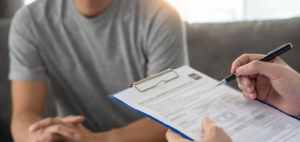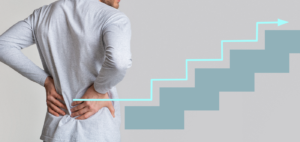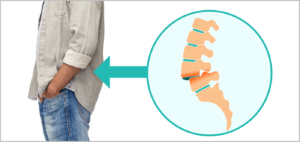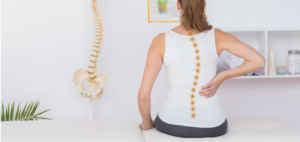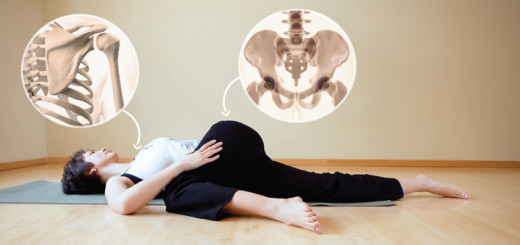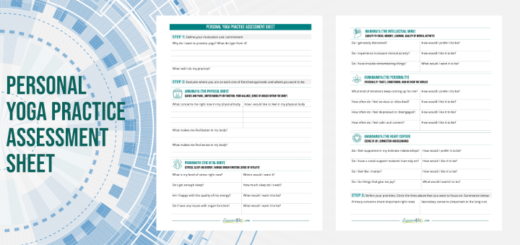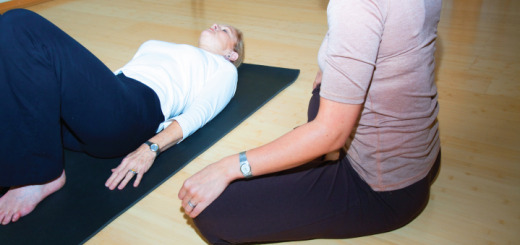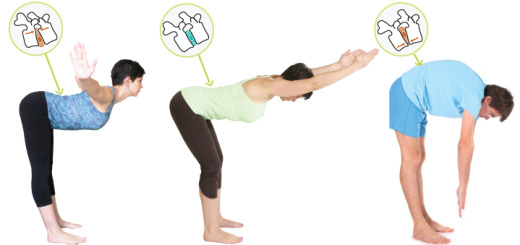How to help your students take the load off their back: A conversation with Rachel Lanzerotti
0Do you have questions about working with students with chronic lower back pain? Join experienced Yoga Therapists Rachel Lanzerotti and Olga Kabel for a casual discussion of practical teaching strategies to help students who experience back discomfort due to various diagnoses.
Thursday, July 28 at 7 pm ET / 4 pm PT on Zoom
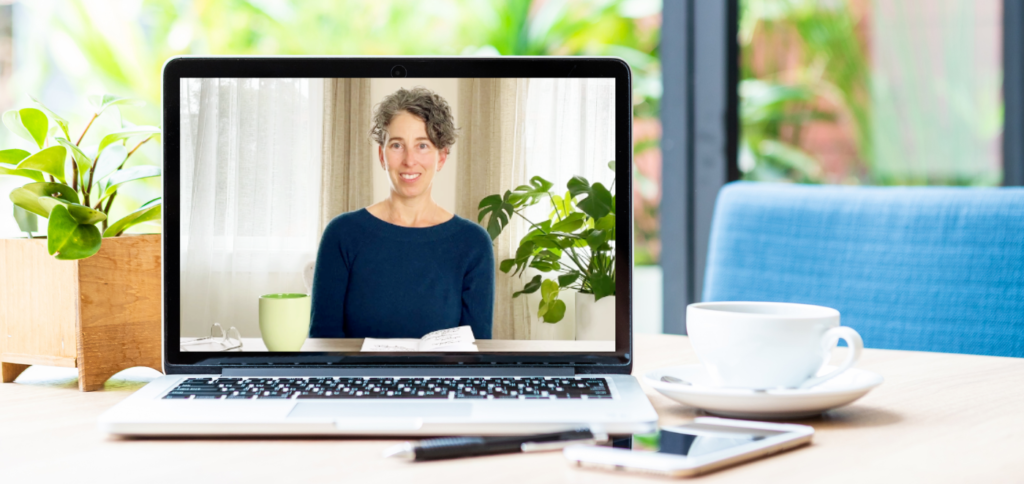
Rachel Lanzerotti (C-IAYT) is a Yoga Therapist with over 20 years in the field who specializes in chronic back pain recovery. Rachel will share her experiences with specializing in yoga therapy for back pain recovery and will describe her process of interviewing, evaluating, setting goals, and designing practices for students with lower back pain.
Some of the questions discussed will include:
- What kind of research do we need to do on the student’s condition?
- What do we do if they don’t have a diagnosis?
- How do we know which movements and practices to choose for a specific student?
- What do we need to educate our students about regarding back pain?
- Which layers of the system do we need to consider when working with back pain?
- Is asana enough when working with back pain?
- What role does the student’s psycho-emotional state play in lower back pain?
Are there other questions that you would like to discuss? Join the conversation on Thursday, July 28 at 7 pm ET / 4 pm PT and ask away!
This event is open to Sequence Wiz members only. Please reserve your spot here >
If you are not a member, you can sign up for a free 14-day trial of Sequence Wiz here >
We hope to see you at the event!
Blog posts by Rachel
What to ask a new client with chronic back pain
A new client reaches out to you, saying they are suffering with back pain. It has eluded their efforts to feel better. The ongoing or recurring discomfort is keeping them from resting well, working well, or doing activities with family and friends. How do you begin working with them? Read more >
How working developmentally helps clients with back pain
Developmental movement practices are taught sequentially, reinforced gradually, and employed therapeutically. This implies a logical and stepwise approach, marking milestones. It is about how we develop and progress, where each skill learned depends upon a previous one. In working developmentally— and clarifying that this is a deliberate, therapeutic strategy— the client or student may be able to reclaim their healing and well-being. Read more >
Where to begin with spondylolisthesis and back pain
Spondylolisthesis is a condition of instability of the spine in which a vertebra of the spinal column has slipped forward and puts pressure on a nerve. This can lead to back pain and/or leg pain. This blog post is not medical advice nor a list of postures or sequencing to be generally applied; rather, it offers a few potential starting points for the Yoga Therapist to consider. Read more >
Where to begin with scoliosis and back pain
Scoliosis is a sideways curvature of the spine to one side— to the left or right (e.g., curve to the right in the upper back, and to the left in the lower back). Imbalances might be seen in the physical frame (i.e., positioning of hips, shoulders) and impact the interior and organic body functions (e.g., respiration, digestion). Back pain is one possible consequence of scoliosis. For back pain related to scoliosis of the spine, approaches to sequencing and asana vary among yoga lineages. Debate exists, both anecdotally and in the research literature, about when and whether specific postures lead to improvement. Read more >
Case studies by Rachel
Rachel’s Real-Life Case Studies video series are available exclusively to Sequence Wiz members. Learn more about Sequence Wiz membership > Join our Case Studies group to follow along!
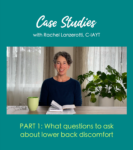
Part 1: What questions to ask about lower back discomfort
In this video, Rachel explains why looking at the student’s posture, gait, movement habits, asymmetries, overall proprioception, capacity to rest, breathing patterns, and lifestyle choices are essential in the therapeutic assessment of lower back pain.
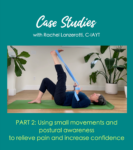
Part 2: Using small movements and postural awareness to relieve pain and increase confidence
In this video, Rachel explains how small movements, grounding belly breathing, and postural awareness helped her student with spondylolisthesis gain a better understanding of what it means to support himself from the inside and to build his confidence.
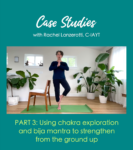
Part 3: Using chakra exploration and bija mantra to strengthen from the ground up
In this video, Rachel describes how her student combined asymmetrical standing poses, chakra exploration, and connection to the natural world to “find the roots of his tree” and learn strategies to manage his back pain.
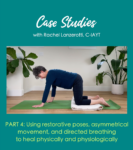
Part 4: Using restorative poses, asymmetrical movement, and directed breathing to heal physically and physiologically
In this video, Rachel shares how she helped her student with scoliosis “yogafy” the recommendations of her doctor, work with the “ouch factor” of anticipating pain, and create an environment to rest and repair physically and physiologically.
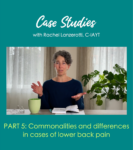
Part 5. Commonalities and differences in cases of lower back pain
In this video, Rachel summarizes the key themes that emerged in her work with students with lower back pain. She emphasizes the psycho-emotional component of confidence and stabilization that was present in all her case studies and how it could be addressed through a variety of yogic tools.

